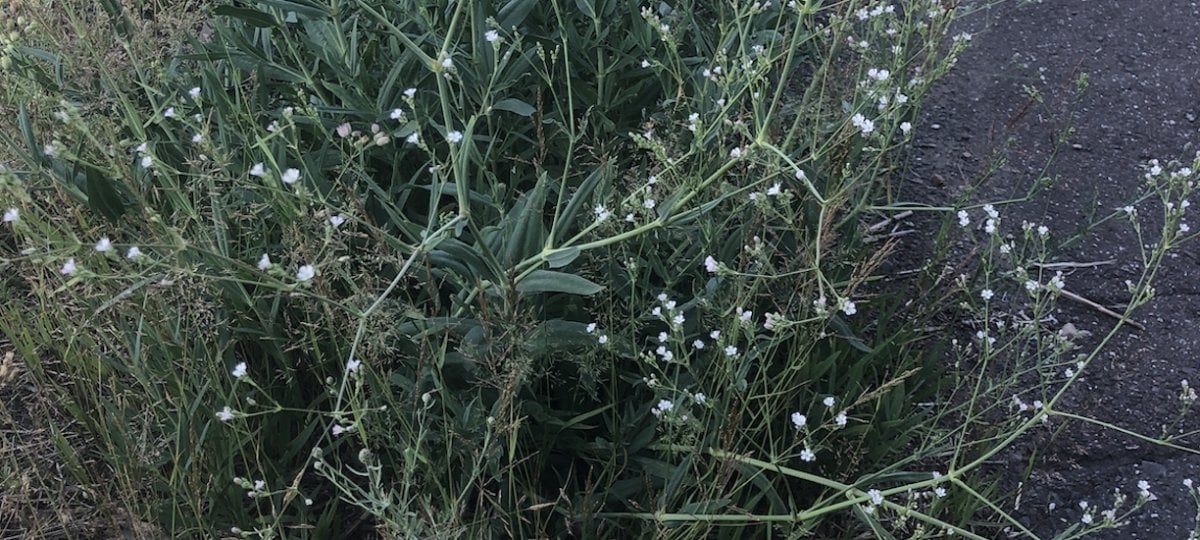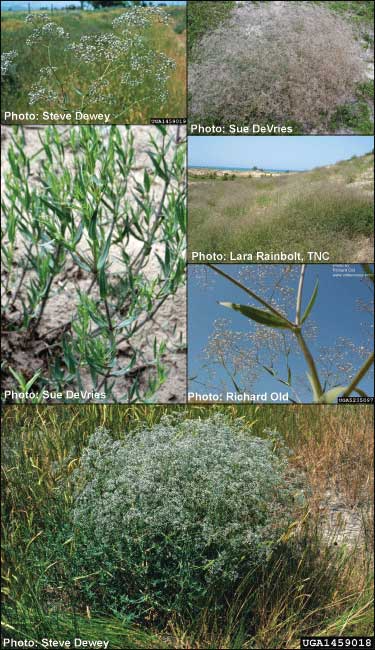Baby's breath growing along the water on the Portage Trail
Image credit: Sigrid Resh

Baby's breath growing along the water on the Portage Trail
Image credit: Sigrid Resh
Baby’s breath is a terrestrial herbaceous invasive that colonizes sunny, disturbed, sandy sites, which makes it problematic near Michigan’s waterways. It is part of the Caryophyllaceae family and is a perennial that’s native to Europe. Identifying features include:

Baby's breath identifying features
Image Credit: Midwest Invasive Species Information Network (MISIN)
For more information, visit MISIN's website
Each baby’s breath plant can produce up to 14,000 seeds every year. Thus, it’s important to be careful with seed heads when managing this plant. It also has the ability to regrow from its taproot if not cut far enough down. Management practices include:
Because management can result in large areas being disturbed, planting native plants following management is essential. In sites along roadways, some great options are native goldenrods (Solidago spp.), common milkweed (Asclepias syriaca), and native asters (Asteraceae family).